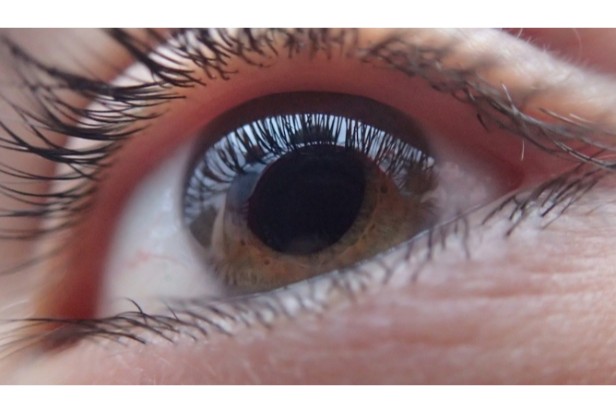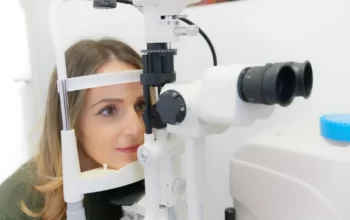
Re-doing cataract surgery is most frequently necessary when an issue arises with the lens implant used in the initial procedure.
The cloudy natural lens of the eye is removed during a cataract procedure and cannot be put back in, so cataract surgery cannot be undone.
Can Cataract Surgery Be Redone?
The majority of the time, having a cataract removed is a successful procedure that can, in some cases, even change your life. However, there is always a slight possibility that the results won’t be as anticipated with any surgical procedure.
Naturally, any vulnerabilities will be described by your cataract surgeon prior to the procedure. However, if the surgery doesn’t yield the desired results, additional procedures can be carried out to guarantee a positive outcome. The following goes over what they are and why they might be required.
Cataract Eye Surgery: the Risks
- Can cataracts recur after cataract surgery?
- Posterior Capsular Opacity
- All about lenses
After Cataract Surgery: Can Cataracts Come Back?
The most crucial thing to comprehend is that cataract surgery is permanent; cataracts cannot recur. The issue is permanently solved once the natural lens is taken out. However, there is a condition that’s commonly referred to as ‘after cataract”, which can cause similar symptoms (fogging or clouding of the vision). Posterior Capsular Opacity is the medical term for this.
Posterior Capsular Opacity
The natural lens of the eye is kept inside a tiny capsule. In order to remove the natural lens and replace it with an artificial one during cataract surgery, the front portion of this device is removed. The back of the lens is kept in place. A very small percentage of the time, the posterior, the remaining part of the capsule, can begin to opacify, or fog up. If this occurs, it results in symptoms that are almost identical to those of a cataract.
Fortunately, YAG Laser Posterior Capsulotomy is a successful treatment for this condition. In this minimally invasive procedure, a laser is used to remove the opacity and restore vision.
All About Lenses
The natural lens of the eye is removed during cataract surgery, and a synthetic lens is substituted. An intra-ocular lens, or IOL, is what this is known as. While most of the time, this results in clear vision, there are times when the lens is the incorrect power or may move as the wound heals. Vision blur may result from this.
There are a number of solutions available if this occurs. The first is to wear eyeglasses to correct blurry vision. This was the standard practice up until a few years ago.
More options are available to cataract surgeons today. Depending on the type of IOL implanted the choices include:
- Further treatment to replace or remove the IOL
- Laser vision correction
- Adjustment of the lens within the eye by a light delivery treatment (only suitable if a particular type of IOL has been implanted)
What Are the Common Causes of Intraocular Lens Displacement?
Intraocular lens (IOL) dislocation is a very rare condition; its most common causes include:
- Eye injuries
- Previously performed eye surgery, such as glaucoma surgery and vitrectomy
- High myopia (nearsightedness)
- Crystalline pseudoexfoliation syndrome (PSX) that consists of breakage of the fibers of the ligaments that support the zonule (the natural lens of the eye)
According to research, between 0.05% and 3% of cataract surgery patients may experience a spontaneous dislocation, and the incidence may be higher five years after surgery.
What Are the Different Types of An Intraocular Lens?
An intraocular lens (IOL) is a soft, foldable artificial lens that can be inserted to replace the damaged natural lens. It is frequently used as a cataract treatment option, but it is also used in other vision treatments. The different types of IOL are as follows:
- Mono-focal: These are the common single-focus lenses made for distance vision.
- Multifocal: For near, intermediate, and distance vision, these have multiple-focus lenses.
- Toric: For astigmatism, these lenses are used.
- Mono-vision: They are a system of two eyes’ worth of different-power lenses. Their versatile option has a wider field of focus and behaves more naturally. Your likelihood of requiring reading glasses is reduced.
In more complex situations, the doctor may employ multiple technologies, and the patient may select a variety of lenses to design a tailored course of action for their visual needs.
Treatment After Cataract Surgery
Similar to how cataract surgery itself is a routine procedure, so too are the various post-operative treatments. In your case, your ophthalmologist will decide the best course of action. This could be one of the aforementioned surgical options, or it could just be using eyeglasses to correct any vision problems.
You and your skilled cataract surgeon will decide together which course of action is best.
What is Cataract?
A cataract is a condition where the natural lens becomes cloudy for a variety of reasons, including advanced age. The normal passage of light through the eye may be obstructed by this clouding of the lens, impairing vision as usual. An artificial lens called an IOL implant is used to replace the cataract-filled lens of the eye after cataract surgery, or glasses or contact lenses are used to make up for its absence. The majority of patients could benefit from an IOL transplant during surgery.

What is the Recovery After Cataract Or Lens Replacement Surgery?
Since local anesthesia is used during the procedure, the patient might not experience any pain. For the first day or two following the procedure, there may be some itching and mild discomfort, but these symptoms usually go away. To provide comfort during that stage, the patient might be given eye drops. After having surgery for a new lens, most people can go back to work in a week or two. Following treatment, vision may gradually improve over the first few weeks, with optimum vision typically being attained after four to six weeks.
Is Lens Replacement Surgery the Safest Procedure?
One of the safest medical treatments is lens replacement. Although there are some potential complications, like with any surgical procedure, they are uncommon and typically treatable with additional care.
FAQs
Can Your Vision Change Years After Cataract Surgery
No, your vision generally doesn’t deteriorate after cataract surgeryunless other problems arise, such as macular degeneration or glaucoma.
How Many Times Can You Get Cataract Surgery
Cataract surgery is irreversible. This is due to the fact that a cataract’s cloudy natural lens is surgically removed and is unable to be replaced



